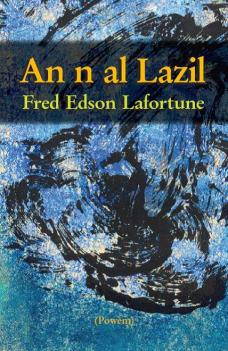Blog Archives
Exposition : Mandela, l’homme symbole
Une exposition à Paris retrace le parcours exceptionnel du héros sud-africain. Un des moments forts de la saison de l’Afrique du Sud en France.

Tout le monde connaît Nelson Mandela. Mais que sait-on vraiment de lui ? L’exposition que l’Hôtel de Ville de Paris consacre à l’ancien leader de l’ANC joue sur cette distance entre la dimension iconique et la réalité historique d’un parcours d’homme au milieu d’un peuple. La mise en scène n’a pas besoin d’être spectaculaire, tant ce destin contient en lui-même d’émotions. Ainsi celle qui étreint le visiteur, en pénétrant dans la cellule, au seuil de l’exposition, reconstituant l’espace de 2,4 mètres sur 2,1 dans lequel Mandela a passé 18 des 27 années de sa vie de prisonnier. Et c’est cet homme-là que l’on voit ensuite, presque sur un mode warholien au fil de ses représentations : son beau portrait par David Goldblatt, la maquette de la sculpture de Marco Cianfanelli, érigée aujourd’hui sur le lieu de son arrestation, son image sur les tissages de perles des femmes de sa région natale et, sous les objectifs des médias, posant avec les grands du monde entier.
Charismatique, c’est peu dire, mais ce n’est pas tout dire, car l’on voit, dans les documents des salles suivantes, comment le sort de tout un pays se joue dans les moments charnières et moins “visibles” de la vie de Mandela, “celui qui se trouva être la bonne personne au bon endroit”, selon Christopher Till, directeur du musée de l’Apartheid à Johannesburg et commissaire de cette exposition réalisée à l’occasion des 90 ans du leader noir.
 En hauteur, des portraits de Nelson semblent regarder Mandela. Le premier le montre en jeune boxeur, ayant déjà le sens du combat. Enfance au village, choc de l’immersion dans la grande ville de Johannesburg pour ses études d’avocat. S’ensuivent toutes ses rencontres fondatrices qui orientent le jeune militant de l’ANC dans la lutte anti-apartheid. Les épisodes de la lutte se succèdent à l’intérieur de l’Afrique du Sud, comme sur tout le continent, dans la clandestinité. Devenu le chef du MK (aile combattante du mouvement), il est arrêté en 1964. C”est le début de la longue vie du prisonnier, mais aussi de négociateur hors pair. Une histoire violente, dure, mais d’espoir aussi, défile de documents en photos sur les panneaux, ainsi que de vidéos, de sa première interview (il était barbu et plutôt rond) jusqu’aux images de la Coupe du monde de rugby de 1995 (qui inspira le réalisateur d’Invictus), en passant par la sortie de prison et les rudes années d’avant l’investiture…
En hauteur, des portraits de Nelson semblent regarder Mandela. Le premier le montre en jeune boxeur, ayant déjà le sens du combat. Enfance au village, choc de l’immersion dans la grande ville de Johannesburg pour ses études d’avocat. S’ensuivent toutes ses rencontres fondatrices qui orientent le jeune militant de l’ANC dans la lutte anti-apartheid. Les épisodes de la lutte se succèdent à l’intérieur de l’Afrique du Sud, comme sur tout le continent, dans la clandestinité. Devenu le chef du MK (aile combattante du mouvement), il est arrêté en 1964. C”est le début de la longue vie du prisonnier, mais aussi de négociateur hors pair. Une histoire violente, dure, mais d’espoir aussi, défile de documents en photos sur les panneaux, ainsi que de vidéos, de sa première interview (il était barbu et plutôt rond) jusqu’aux images de la Coupe du monde de rugby de 1995 (qui inspira le réalisateur d’Invictus), en passant par la sortie de prison et les rudes années d’avant l’investiture…
Talon d’Achille
Rien ne paraît omis, pas même un panneau de mea culpa du père de la nation arc-en-ciel. Il s’avoue en deçà de ce qu’aurait exigé la lutte contre le sida dans son pays (son fils en est mort), parmi d’autres faiblesses… Son talon d’Achille de premier président noir d’Afrique du Sud est son épouse Winnie, mais on insiste davantage ici sur le couple souriant qu’il forme ensuite avec Graça Machel, l’ex-femme du président mozambicain.

Mandela aura 95 ans le 18 juillet prochain. Les Nations unies ont reconnu cette date comme le Mandela Day, et il sera fêté pour la première fois en France. En hommage à celui qui a passé 67 ans de son existence au service de sa cause, chacun, ce jour-là, est censé consacrer 67 minutes de sa vie aux autres, sous la forme qu’il choisit. Un peu plus d’une heure dans une journée, qui s’achèvera par par un grand concert place de la République à Paris. La tour Eiffel brillera aux couleurs de l’Afrique du Sud, comme le 28 mai dernier qui vit le lancement de la saison de l’Afrique du Sud en France.
Moment fort de cette manifestation, la remise le 30 mai dernier du titre de citoyen d’honneur à Mandela en présence de son arrière-petit-fils. Cette saison compte aussi son lot de manifestations dans tout le pays. Cette exposition est une belle manière d’y entrer, on regrette seulement qu’elle s’achève dès le 6 juillet… Et l’on peut aussi se reporter à la biographie en images Nelson Mandela, un homme d’exception, des éditions du Jaguar.
Jusqu’au 6 juillet. Hôtel de Ville de Paris. Du lundi au samedi, de 10 à 19 heures. Entrée gratuite.
Source: Lepoint.fr




